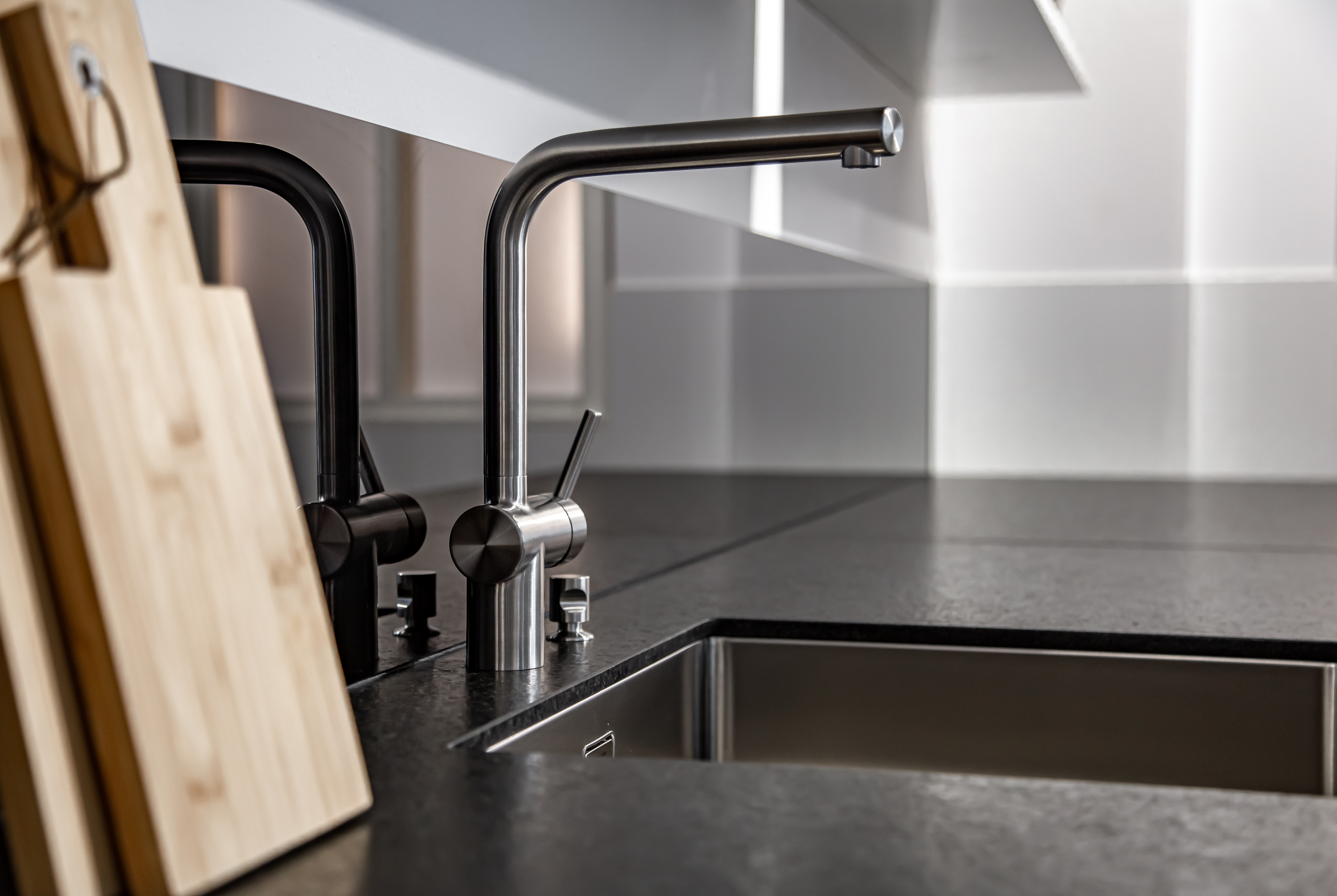
An undermount sink is not only a very convenient solution but also elegant and suitable for kitchens with a modern design. That is why more and more people are opting for this method of installing a kitchen sink. However, the installation of this type of sink must be done very precisely; otherwise, it will not only look poor but also not function properly. If you are not an expert in this field, it is better to seek help from someone more experienced.
Elegant Undermount Sink
A kitchen countertop with all the necessary kitchen appliances regularly distributed in it is a solution that will allow you to create not only an elegant but also a very functional space. Worktops designed according to ergonomic principles allow for comfortable work in the kitchen. However, to ensure optimal comfort while working, it is necessary to properly install the undermount sink.
When opting for an undermount sink, it's important to choose the right countertop. An undermount sink is practically invisible, which is why many people choose this installation method to fully utilize the aesthetic potential of their countertop. In the case of a top-mounted sink, the countertop is partially covered by the sink elements. However, with an undermount sink, it does not protrude at all above the edge of the countertop.
.jpg)
How to Install an Undermount Sink?
Undermount sinks allow for a seamless effect with the countertop, but for this to succeed, professional help is needed. The decision to mount an undermount sink should ideally be made before purchasing the countertop, during a general renovation or when finishing a new apartment. This type of sink is placed in a specially cut hole in the countertop, making the appropriate thickness of the countertop crucial. For composite countertops, this thickness can be from 0.6 cm, while for stone countertops it’s about 2-3cm. Wooden and laminated countertops can be thicker, up to 7 cm. We will discuss later which countertops are suitable for combining with an undermount sink.
The first step is to cut a hole in the kitchen countertop that corresponds to the size of the undermount sink. It's worth entrusting the hole-cutting service to someone who knows what they're doing and has the right equipment. This is especially important when talking about a granite countertop or one made with quartz sinters. Only with perfectly polished edges can everything be ideally matched. Next, the sink should be placed on the countertop "upside down". After attaching the sink to the countertop, the joints should be sealed with silicone. The next step is to turn the countertop with the sink into the correct position and install the siphon and tap. As can be seen, self-installation can be quite challenging.
Undermount Sinks – Which Countertops?
Undermount sinks should be paired with the right type of countertop, as not every countertop can accommodate the type of sink presented, mainly depending on the material it is made of. Specialists recommend selecting only waterproof materials when choosing an undermount sink. Therefore, countertops made of natural stone, composite, marble, granite, or other types of sinter are suitable. These materials are resistant to water absorption, which is particularly important for an undermount sink, as during washing, water splashes beyond the edges of the sink, also onto the countertop surface. Furthermore, maintaining the cleanliness of these materials poses no problems. This is an excellent solution for modern kitchens.
Due to the effects of water, wooden and laminated countertops are not used for undermount sinks, as they are less resistant not only to water but also to mechanical damage. Even well-impregnated wooden countertops will degrade over time, and mold or fungi may appear. In contrast, a laminated countertop is only waterproof on the outside. When cutting holes into it, the chipboard is exposed, which can gradually absorb water, swell, and lead to the destruction of the countertop.


















